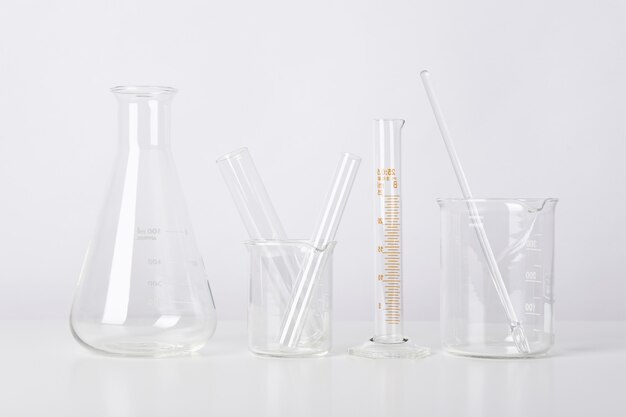The Ultimate Guide: Converting Grams to Moles with Ease
When you're working with chemistry, understanding how to convert grams to moles is an essential skill, akin to learning how to drive before hitting the road. It's something every chemistry enthusiast, student, or professional must grasp to decode the mysteries of matter. This guide will walk you through the process step-by-step, using clear explanations and practical examples to make complex concepts simple and approachable.
Understanding the Basics: Why Converting Grams to Moles Matters
Before diving deep into the calculations, it's important to understand why these conversions are vital in chemistry. Moles serve as a bridge between the atomic world and the macroscopic world. One mole of any substance contains exactly 6.022 x 10²³ particles (Avogadro’s number), whether they are atoms, molecules, or ions. By converting grams to moles, chemists can calculate reactants and products in chemical reactions accurately, ensuring experiments are feasible and predictions reliable.
Key Concepts: Atoms, Molecules, and Moles
- Atoms: The basic units of matter, such as hydrogen (H), oxygen (O), and carbon (C).
- Molecules: Structures consisting of two or more atoms bonded together, like H₂O and CO₂.
- Moles: A unit to express the amount of a chemical substance, representing Avogadro's number of entities.
Understanding these fundamental concepts will empower you to tackle more complex tasks in chemistry.
The Step-by-Step Process of Converting Grams to Moles
Step 1: Know the Molar Mass
The first step in converting grams to moles involves understanding molar mass. Molar mass is the mass of one mole of a substance, expressed in grams per mole (g/mol). It can be found on the periodic table as the atomic weight for elements or calculated for compounds by summing the atomic weights of its constituent atoms.
Example:
- For Carbon (C), the molar mass is approximately 12.01 g/mol.
- For Water (H₂O), the molar mass is calculated as follows:
- (2 imes ext{Hydrogen (1.01 g/mol)} + 1 imes ext{Oxygen (16.00 g/mol)} = 18.02 , ext{g/mol})
Step 2: Use the Conversion Formula
Once you have the molar mass, use the conversion formula: [ ext{Moles} = frac{ ext{Mass of substance in grams}}{ ext{Molar Mass in g/mol}} ]
Step 3: Carry Out the Calculation
Plug the values into the formula to calculate the moles.
Example Calculation:
Imagine you have 36 grams of water (H₂O).
- Molar mass of H₂O = 18.02 g/mol
- ( ext{Moles of } ext{H₂O} = frac{36 , ext{grams}}{18.02 , ext{g/mol}} approx 2 , ext{moles} )
Common Applications: Why Grams to Moles Conversion Is Essential
Converting grams to moles isn't just an abstract exercise—it's a practical necessity in various chemical calculations and experiments. Here are a few scenarios:
Balancing Chemical Equations
Balancing chemical equations involves using moles to ensure that the number of atoms of each element is conserved in a reaction. This practice is fundamental in stoichiometry, the quantitative study of reactants and products.
Reactant and Product Calculations
Determining how much of each reactant is needed, or how much product can be formed, heavily depends on converting grams to moles and vice versa. This ensures reactions progress to completion without waste.
Solution Concentrations
In chemical solutions, concentrations are often expressed in terms of moles per liter (molarity). Converting between grams and moles is crucial to preparing solutions of desired concentrations.
Tips and Tricks for Smooth Conversions
While the process is straightforward, here are some tips to ensure smoother conversions:
- Always double-check your molar masses. Even a small error can skew your results significantly.
- Keep track of units at each step to avoid mix-ups.
- Practice with various examples to build confidence and speed.
Visual Summary: Key Steps for Grams to Moles Conversion
Here’s a quick reference guide to keep at your side during calculations:
🔍 Summary: Grams to Moles Conversion 🔍
- Identify Molar Mass (from periodic table or calculation)
- Apply Conversion Formula: Moles = Mass / Molar Mass
- Execute Calculation and double-check results
Related Subtopics: Deepening Your Chemistry Skills
Stoichiometry: The Art of Chemical Accounting
Stoichiometry involves the precise calculation of reactants and products in chemical reactions, centered around mole ratios derived from balanced equations. This deeper dive will enhance your ability to make accurate chemical predictions and optimizations.
Understanding Molarity and its Impact
Moving a step further, molarity (moles per liter) provides insights into solution concentrations, crucial in reactions occurring in aqueous solutions. This understanding bridges the gap from solid to liquid reactions.
Practical Applications: Beyond the Classroom
Explore how converting grams to moles plays a crucial role in real-world applications such as pharmaceuticals, environmental science, and materials engineering. Each field leverages this skill to drive innovation and solve complex problems.
Conclusion
Mastering the conversion of grams to moles empowers you with a fundamental toolset to navigate the world of chemistry with confidence. By understanding the underlying principles and practicing diligently, you prepare yourself for success in both academic and professional arenas. Whether predicting the outcome of a reaction or planning an experiment, the power of conversion will always be at the core of your chemical explorations. 📚✨

Related Topics
- How Can I Transfer Data From One Laptop To Another
- How Can I Transfer Domain To Godaddy
- How Can I Transfer My Calls To Another Phone
- How Can I Transfer Pdf To Word
- How Can We Transfer Data From One Laptop To Another
- How Can You Transfer Data From One Phone To Another
- How Can You Transfer Emails From One Account To Another
- How Can You Transfer Vhs Tapes To Dvd
- How Do I Transfer a Prescription From Walgreens To Cvs
- How Do I Transfer Data From Ipad To Ipad